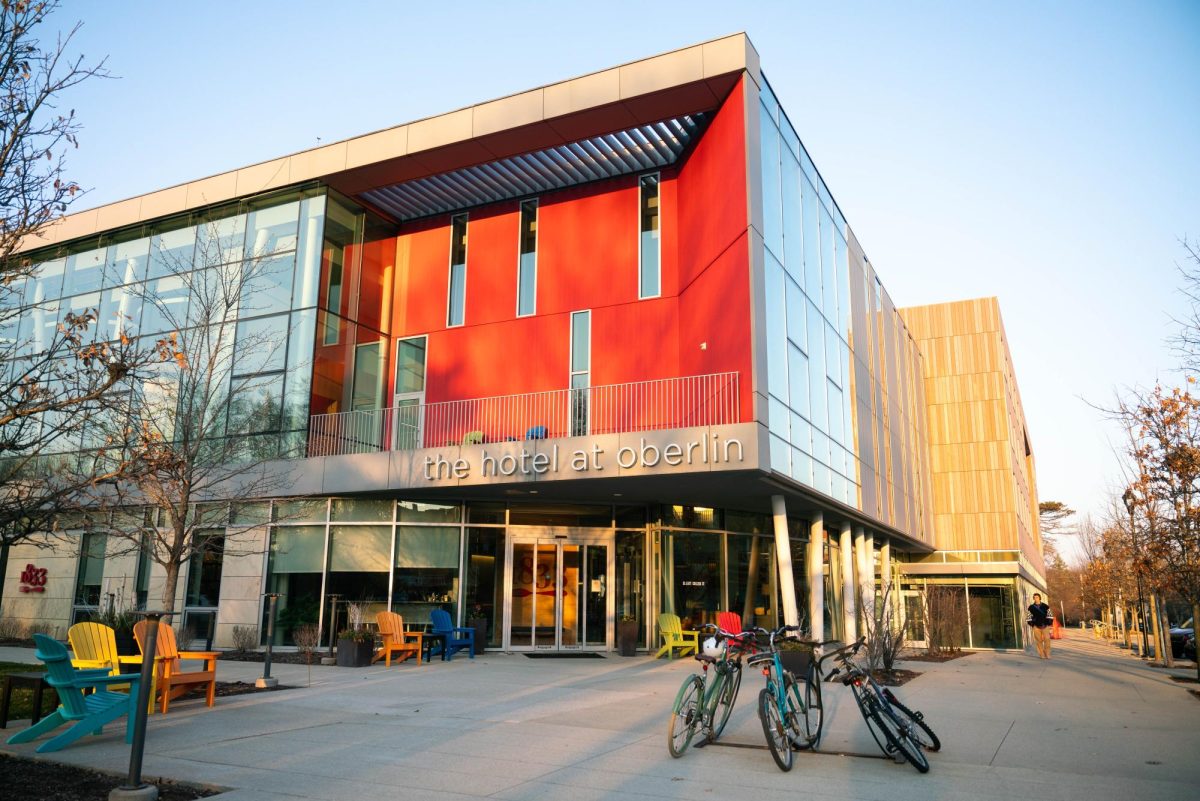On Feb. 17, over 50 people gathered at the Wilson Bruce Evans House to celebrate the unveiling of an Ohio Historical Marker. The unveiling coincides with the rehabilitation of the home, which originally belonged to abolitionist Wilson Bruce Evans.
Evans was originally born a free man in North Carolina. He left the South in April 1854 with his wife Sarah Jane Leary and their newborn baby to search for a better life in Ohio. From the time he arrived in Oberlin, he was heavily involved in town affairs. In the election of fall 1855, Evans was one of 24 African Americans to cast a ballot. He is now most known for his role in the Oberlin–Wellington rescue, which involved the rescue mission of John Price, an enslaved man seeking freedom who was caught by slave hunters.
“[The Wilson Bruce Evans Restoration project] is like a dream come true,” Phyllis Yarber Hogan, vice president of the Wilson Bruce Evans Home Historical Society, said. “My passion is to make sure children from Oberlin don’t grow up like I did. I knew none of the history. And the history that I knew really didn’t include African Americans.”
Hogan said that, growing up, she knew that the Wilson Bruce Evans Home was a historical house but knew none of the details or the importance behind it.
Her introduction to the details of Oberlin’s history started with a class taught by Professor Emeritus of History Carol Lasser, who is now the executive director of the Wilson Bruce Evans Home Historical Society. The class, Oberlin History as Americans, not only helped Hogan expand her knowledge base of Oberlin, but also helped Lasser learn a lot about the racial history of Oberlin.
The restoration of the home started in 2021, during the pandemic, when Lasser and her husband Gary Kornblith would walk around Oberlin and noticed the state of the house.
“It was not getting the love it needed,” Lasser said.
With the help of Executive Director of the Oberlin Heritage Center Liz Schultz, Lasser reached out to Evans’ descendants, and both parties were interested in transforming the house into a historic home and educational center.
Since then, they have started a restoration project with the help of a $283,250 grant from the National Park Service. The most recent development was the restoration of the porch.
“It’s a real visual thing,” Hogan said, emphasizing that the overall look of the house is now much more sophisticated.
The next step of the restoration includes completing the rehabilitation and adding an annex in the back for the ADA entrance, according to Lasser. She said that the Home Historical Society had raised $750,000 and hoped to continue fundraising.
Descendants of Wilson Bruce Evans and Sarah Jane Leary such as Catherine Grooms, who serves as treasurer for the Wilson Bruce Evans Home Historical Society, are now directly involved with the project.
“The history of our family has always been a part of my life,” Grooms said. “We always knew about the historical significance of our family … as it relates to the Underground Railroad.”
Grooms expressed a continued connection to the physical property in Oberlin and emphasized the importance of the historical marker in helping the community connect with the home.
“[The historical marker] reinforces an acknowledgement of historical significance, so I think it’s easier for people to relate to it,” she said.
Hogan spoke on the significance of having these stories available for Black children growing up in the Oberlin school districts.
“[These stories] give them some sense of pride and ownership in Oberlin’s history,” Hogan said. “Their story, and many more in Oberlin that have not been told, tells the story of people who didn’t wait for somebody to do something for them. … They were actively involved.”
Because the date of Evans’ birth is unclear, the Society plans on spending the rest of 2024 celebrating the birth of Wilson Bruce Evans.








